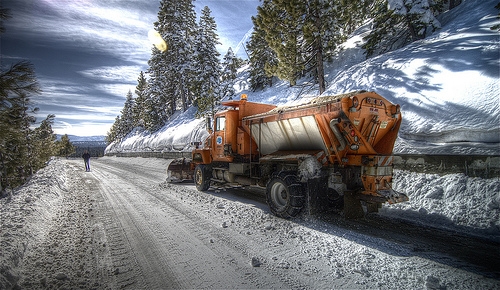
As winter approaches, diesel gelling can become a serious problem in colder climates. Ambient air temperature and the chemical make up of the fuel determines if a combustion engine will start or stall.
The ability to not gel in colder climates is an issue for diesel because it is comprised of straight and branched chain hydrocarbons. These kinds of hydrocarbons -- also called paraffin waxes -- become solid at the lower winter temperatures found in colder geographic areas. The amount of paraffin wax diesel contains depends on the kind of crude oil used to produce the diesel fuel and the process used to manufacture it.
As diesel cools, it drops to a temperature where it cannot dissolve the waxy components that precipitate out of the fuel. The temperature at which wax just begins to precipitate and the fuel becomes cloudy is the cloud point.
When the temperature of diesel drops from six to ten degrees fahrenheit below the cloud point, so much wax forms that it can no longer flow. At this temperature, diesel has reached its pour point or gel point.
Additives can lower a diesel fuel's gel point or cloud point and improve its cold flow properties. Most These are typically polymers that diminish the effect of wax crystals on fuel flow by modifying their size and shape.
Biodiesel fuel which is required to be mixed with diesel fuel in many states also adds to gelling. Biodiesel gels at higher temperatures than conventional diesel.